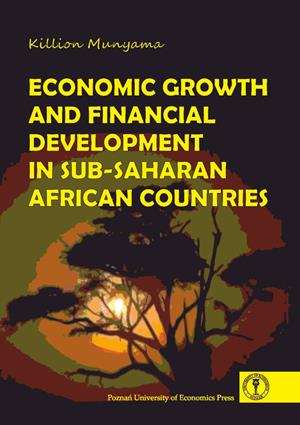
e-ISBN:
Edition: I
Publication date: 2011
First publication date: 2011
Pages: 185
Print:
Electronic version:
Format: B5
License : commercial
last week: 7
last 3 months: 58
Killion Munyama
Economic growth and financial development in sub-saharan African countries
Availability and purchase
Print version(PWN bookstore)
*Clicking the button takes you to an external open access or selling platform.
Munyama, K. (2011). Economic growth and financial development in sub-saharan African countries. Poznań University of Economics and Business Press.
Treść tej książki stanowi kompleksowy przegląd najważniejszych międzynarodowych instytucji finansowych. Zawiera w sobie ich genezę, fazy rozwoju, realizację celów statutowych, a także zaangażowanie w procesy transformowania gospodarek Europy Środkowo-Wschodniej. Na tym tle został pokazany udział Polski jako członka poszczególnych organizacji, względnie jako beneficjenta strumieni pomocy rozwojowej w okresie transformacji. Książka ukazuje w sposób kompleksowy elementy infrastruktury stosunków ekonomicznych, z których funkcji i środków ekonomicznych korzystały także transformowane gospodarki Europy Środkowej i Wschodniej. Książka stanowi cenną skarbnicę wiedzy dla wszystkich pragnących zrozumieć funkcjonowanie wielkich międzynarodowych instytucji finansowych, a także udział tych instytucji w procesach reformowania gospodarek, również i gospodarki polskiej.
Introduction
Chapter I. An overview of theories of economic growth
1.1. The meaning of development theory in the world economy
1.2. Thomas Malthus’ theory of economic growth
1.3. Walt Rostow’s theory on economic growth
1.4. Joseph Schumpeter’s development theory
1.5. Gunnar Myrdal’s underdevelopment theory
1.6. Simon Kuznets’ theory of economic growth
1.7. The development theory approach of Amartya Kumar Sen
1.8. An overview of the mechanism for financial development
1.9. A survey of literature on the links between financial development and economic growth
Chapter II. The development problem of Sub-Saharan African (SSA) countries 44
2.1. The significance of colonialism in the world economy
2.2. Common characteristics of developing countries and SSA
2.2.1. Poverty circle dilemma in developing countries
2.2.2. Modified poverty circle
2.3. Geographical, historical and economic background of the SSA countries
2.3.1. Level of standard of living
2.3.2. Rates of population growth and extent of poverty
2.3.3. Level of productivity and dependence on raw materials
2.4. Determinants of economic growth in SSA countries
2.5. Factors stagnating economic growth in SSA countries
2.6. Foreign debt as a barrier to economic and financial development
2.6.1. Availability of loans to SSA countries
2.6.2. Debt servicing dilemma
Chapter III. IMF activities as a determinant of economic growth and financial development in selected SSA countries
3.1. IMF’s source of funding and financing of programmes
3.1.1. IMF source of funding
3.1.2. Prevailing conditions for the use of IMF resources
3.1.3. The evolution of IMF programmes directed to less developed countries
3.2. Poverty Reduction and Growth Facility (PGRF) as a key programme for less developed countries
3.3. International Monetary Fund and World Bank Cooperation in SSA
3.4. General impact of IMF programmes on growth in selected SSA countries in 1987–2007
3.4.1. The case of Kenya
3.4.2. The case of Mozambique
3.4.3. The case of Uganda
3.4.4. The case of Zambia
3.5. A comparison of economic performance of selected SSA countries in the period 1987–2007
3.6. Impact of the global economic crisis on selected SSA countries
Chapter IV. Financial development in selected SSA countries in 1987–2007
4.1. The application of methods measuring financial development
4.2. Findings in measuring financial development in SSA
4.2.1. Market structure and the competitiveness of a financial system in SSA
4.2.2. Availability of financial products in SSA
4.2.3. Degree of financial liberalisation in SSA
4.2.4. The financial institutions environment in SSA
4.2.5. Financial openness in SSA
4.2.6. Monetary policy instruments in SSA
Chapter V. Comparative analysis in the financial development of the four
selected countries
Conclusions
References
List of tables
List of charts
List of figures


